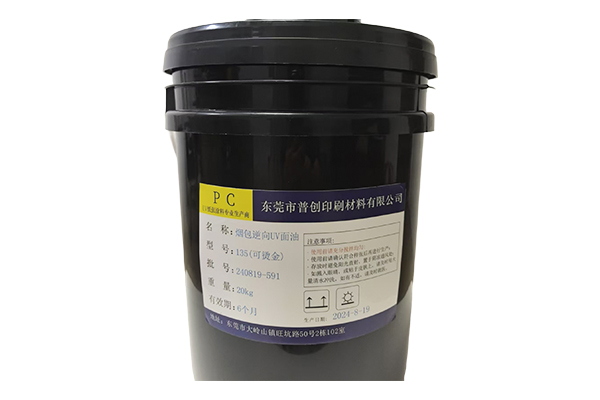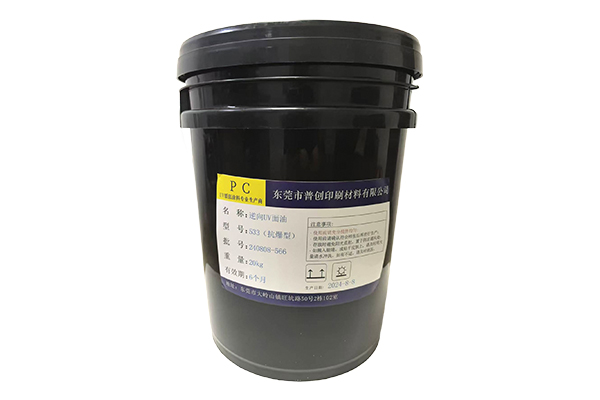What is the difference between cigarette pack reverse uv topcoat and ordinary UV paint?
Release Time : 2025-05-22
Although both cigarette pack reverse uv topcoat and ordinary UV paint belong to ultraviolet curing coatings and occupy a place in the field of coatings, there are many essential differences between the two in actual application and characteristics. These differences are not only reflected in the final visual effect, but also run through multiple links such as material formula, process principle, performance, etc., to shape different product positioning and application scenarios.
From the intuitive visual effect, ordinary UV paint pursues a uniform and transparent gloss. After coating, it can form a smooth and mirror-like bright film layer on the surface of the cigarette box, focusing on improving the overall brightness and texture. The uniqueness of cigarette pack reverse uv topcoat lies in creating a contrast effect of "light" and "matte". It can present both highlight areas and matte areas on the surface of the cigarette box, creating a three-dimensional sense of hierarchy through the contrast of light and shadow. For example, the brand logo part is highlighted, while the background remains matte, making the pattern look more artistic and visually impactful. Compared with the single gloss performance of ordinary UV paint, cigarette pack reverse uv topcoat can attract consumers' attention and highlight the high-end positioning of cigarette products.
In terms of process principle, the construction of ordinary UV paint is relatively simple and direct. After the coating is covered on the surface of the cigarette box substrate by the coating equipment, it is directly exposed to ultraviolet light. The photoinitiator absorbs light energy, prompting the resin to undergo a rapid cross-linking reaction to form a continuous transparent coating. Cigarette pack reverse uv topcoat requires a more complex and delicate operation process. It adopts a double coating process. First, a layer of matte base oil containing a matting agent is applied to the substrate. After drying, a high-gloss UV topcoat is applied to a specific area, and finally UV curing is performed. Due to the different refractive indices of the two coatings, a matte contrast is naturally formed after curing. This layered construction method is difficult to achieve with ordinary UV paint.
In terms of material formulation, the two also have their own emphasis. Ordinary UV paint is mainly based on low-viscosity UV acrylic resin, with the addition of photoinitiators, leveling agents and other additives, focusing on achieving rapid curing and good transparency. In order to achieve the special effect of matte contrast, cigarette pack reverse uv topcoat is more sophisticated in material selection. Matting agent needs to be added to the matte layer, and the matte degree can be adjusted by controlling the type and ratio of the matting agent; high-purity and better-performance resin is used for the glossy layer to ensure high hardness and non-yellowing after curing. In addition, in order to ensure the adhesion between the two layers, a special interface treatment agent is added to prevent the coating from falling off.
In terms of texture performance, the surface of ordinary UV paint after curing is smooth and single, and it mainly plays a physical protection role, such as scratch resistance and waterproofness. Cigarette pack reverse uv topcoat brings a rich tactile experience through precise control of coating thickness and surface structure. The highlight part has a delicate and smooth touch, while the matte area has a slight frosted feel, and can even simulate leather, fabric and other textures, allowing consumers to feel the brand's unique craftsmanship when touching the cigarette box. This tactile difference makes cigarette pack reverse uv topcoat more competitive in high-end cigarette packaging.
In terms of equipment and process requirements, ordinary UV paint is suitable for large-scale standardized production due to its easy operation and low equipment requirements, and most printing companies can easily control it. Cigarette pack reverse uv topcoat requires more professional equipment and stricter process control. The coating process requires extremely high precision, and the thickness of the matte base oil and the glossy top oil must be uniform; the curing process needs to adjust the ultraviolet light energy according to different coatings; the temperature and humidity of the production environment will also affect the final effect, and it needs to be carried out in a constant temperature and humidity workshop. These have raised the application threshold of cigarette pack reverse uv topcoat.
In terms of cost and application scenarios, ordinary UV paint is widely used in various low-end packaging products due to its simple process and low raw material cost, which can help enterprises control production costs. Cigarette pack reverse uv topcoat is mainly used in high-end cigarettes and other products that have strict requirements on packaging quality and visual effects due to the large investment in materials, processes and equipment. Although the cost is higher, the brand premium, anti-counterfeiting function and unique texture it brings can increase the added value of the product and meet the personalized needs of the high-end market.
With the development of the packaging industry, ordinary UV paint is constantly optimized in the direction of reducing costs and improving efficiency, while cigarette pack reverse uv topcoat continues to make breakthroughs in technological innovation. In the future, cigarette pack reverse uv topcoat may incorporate more cutting-edge technologies, such as nanomaterials, intelligent color-changing functions, etc., and further improve its environmental protection performance to adapt to the development trend of green packaging, form differentiated competition with ordinary UV paints, and jointly promote the coatings industry to new heights.






